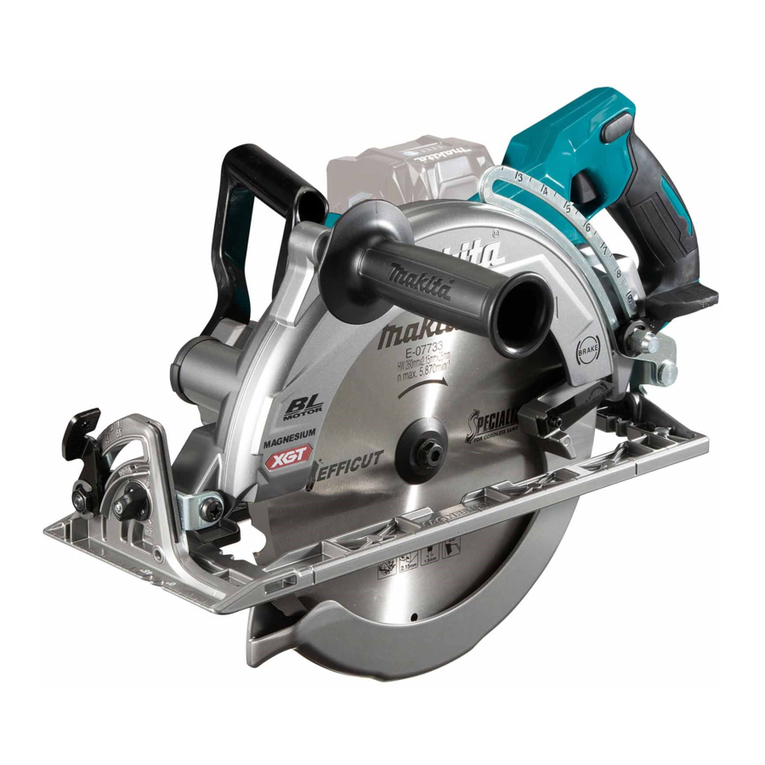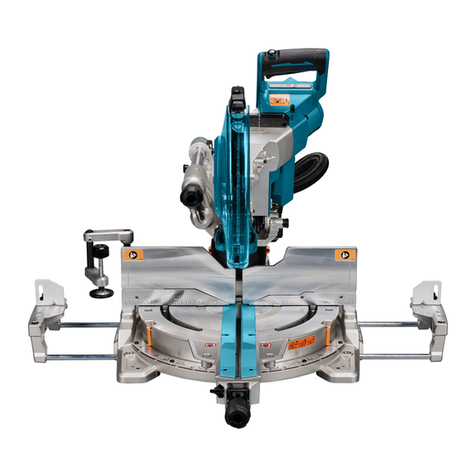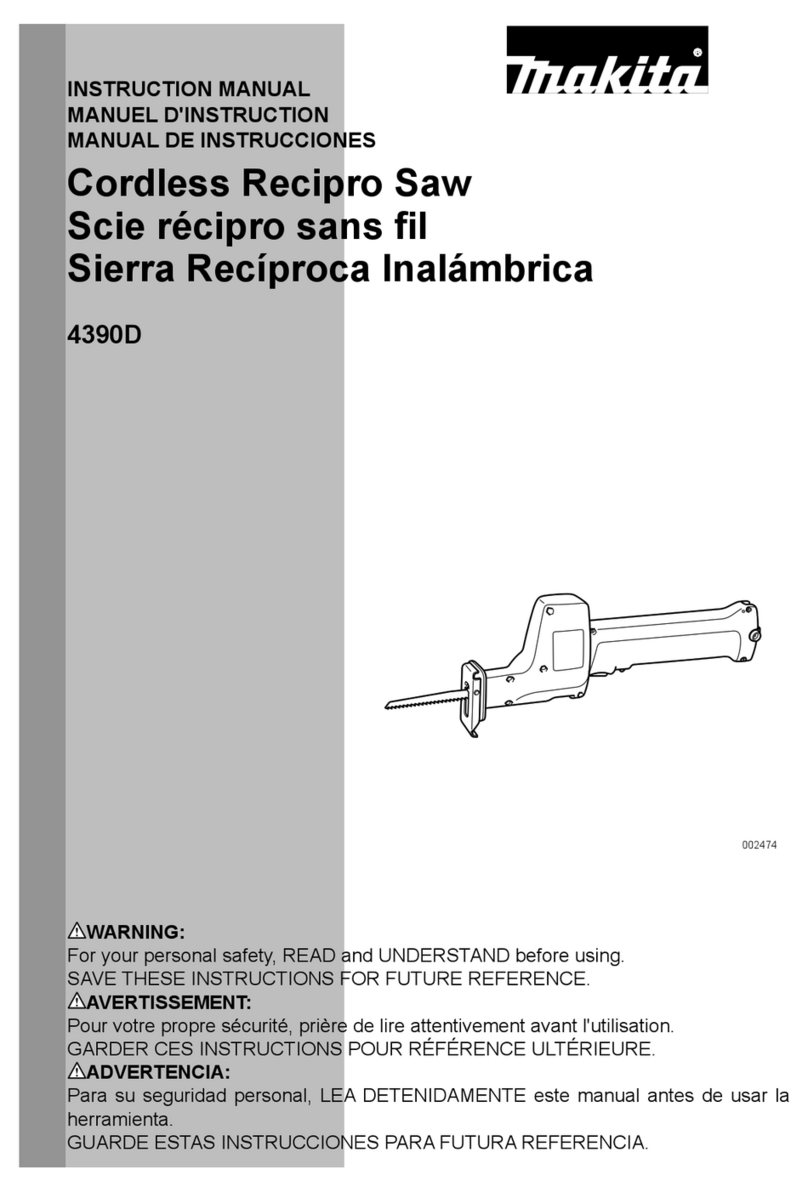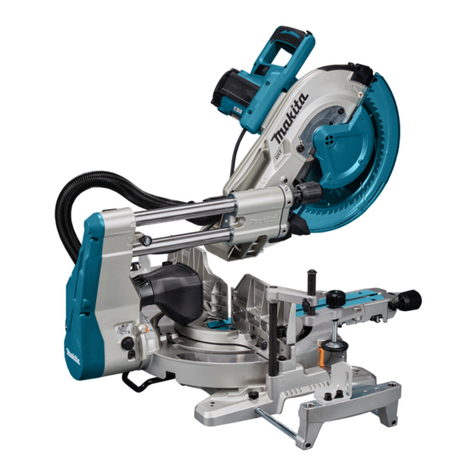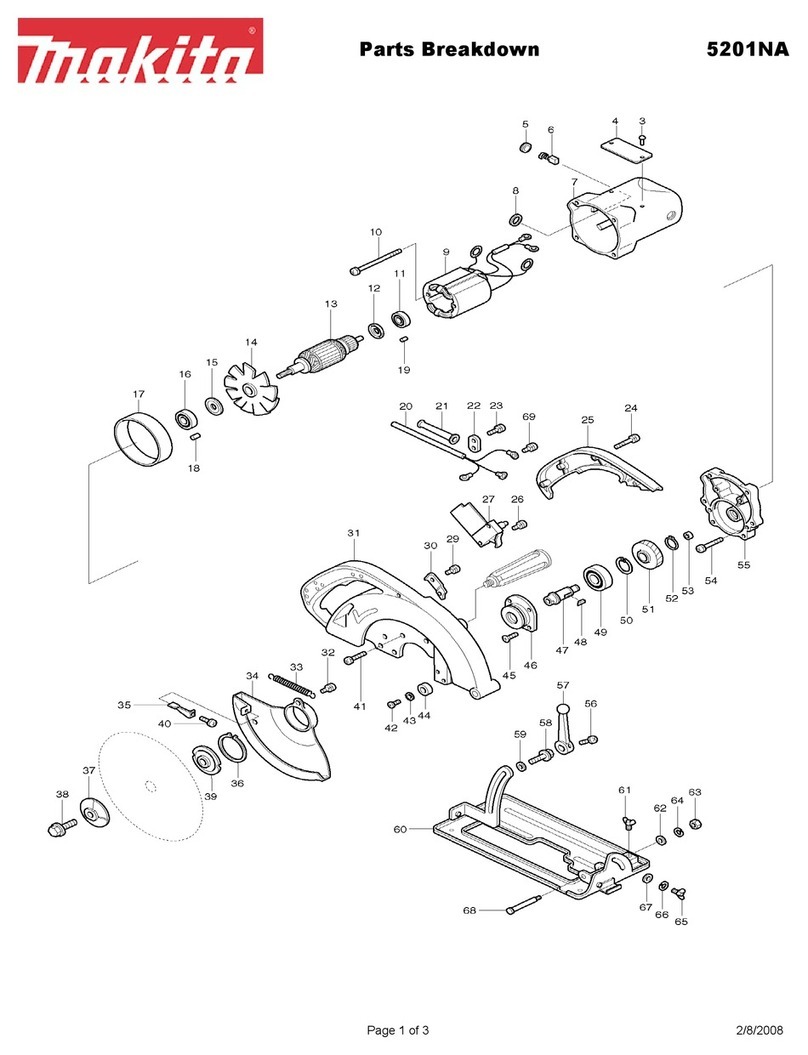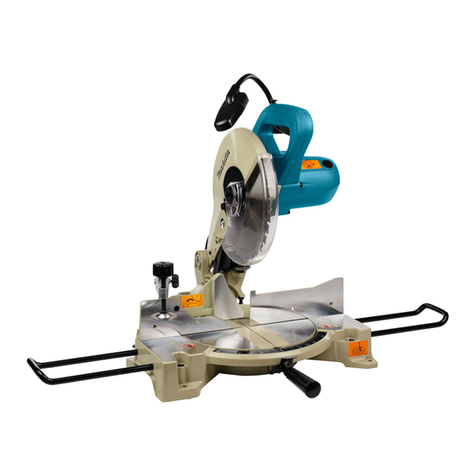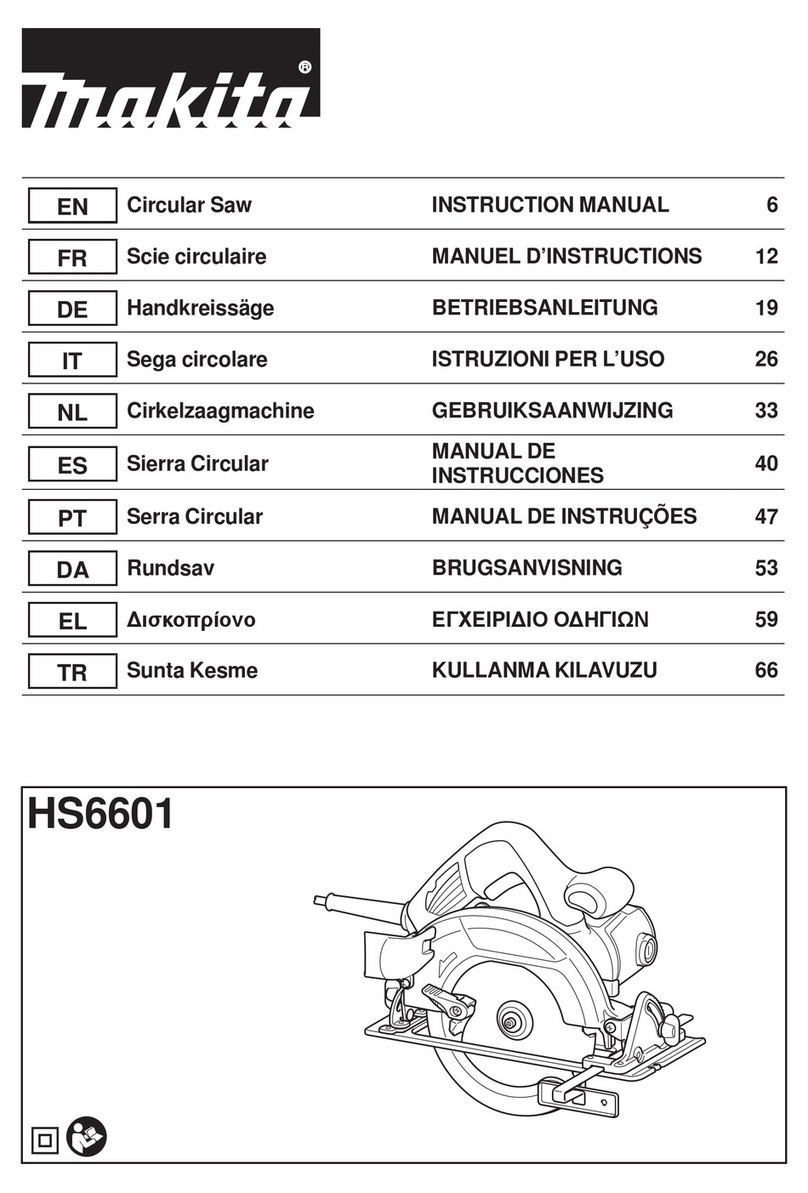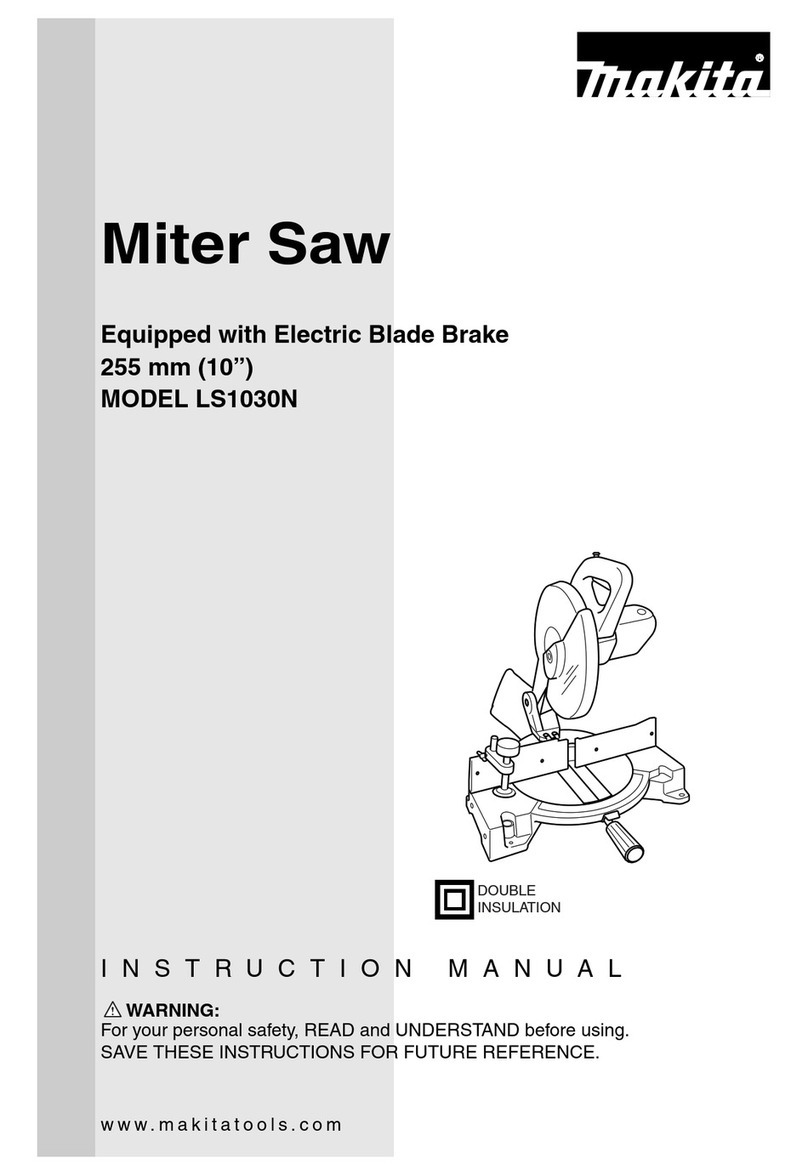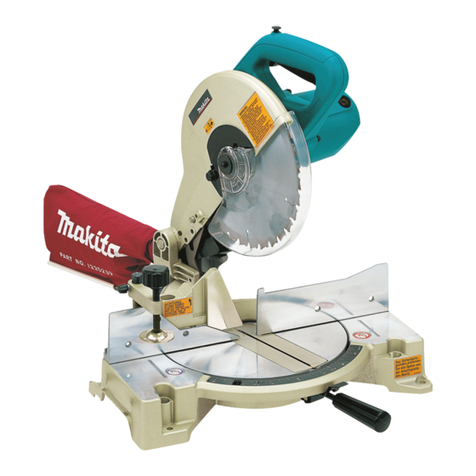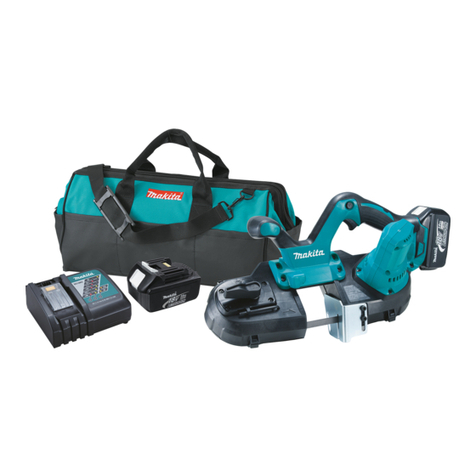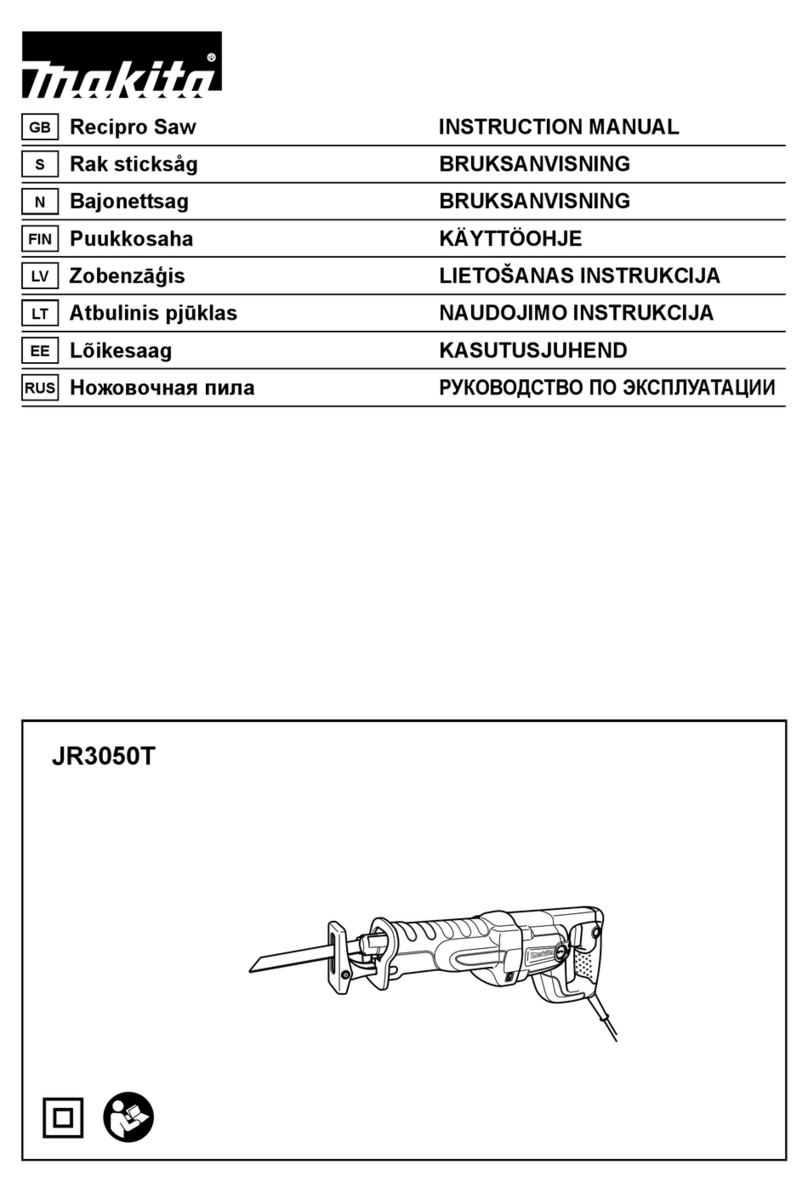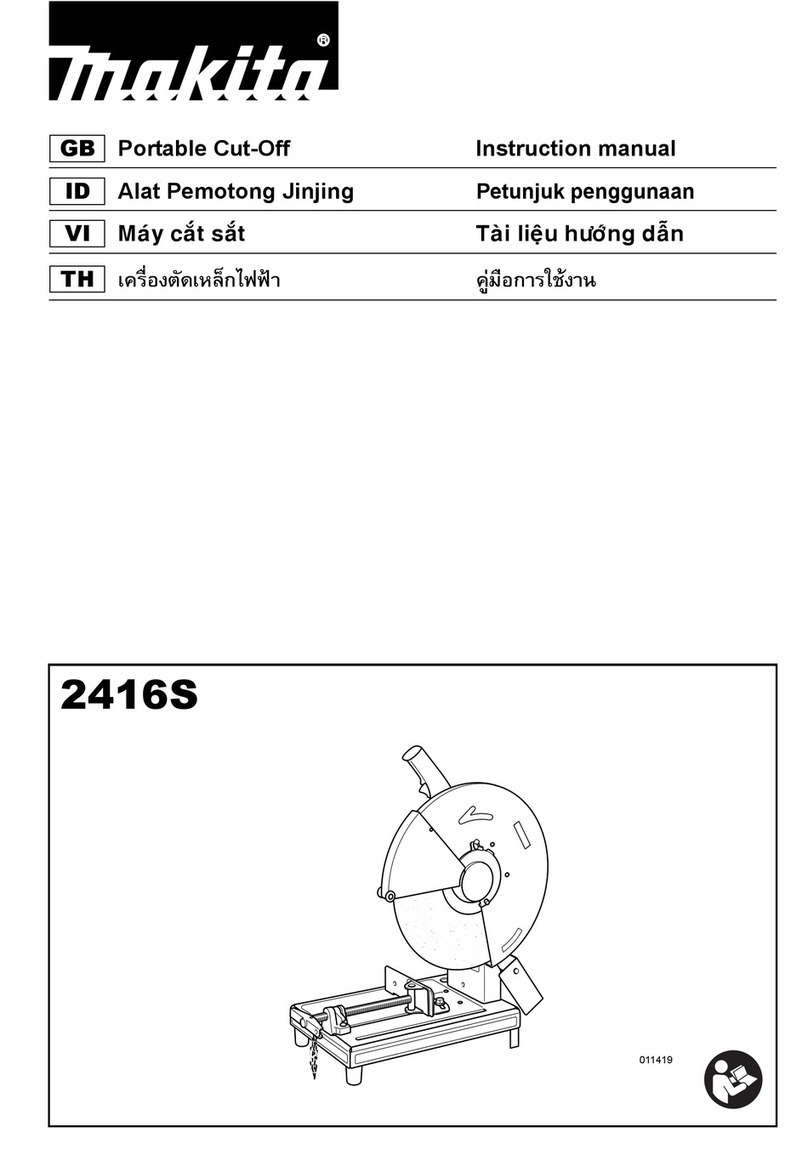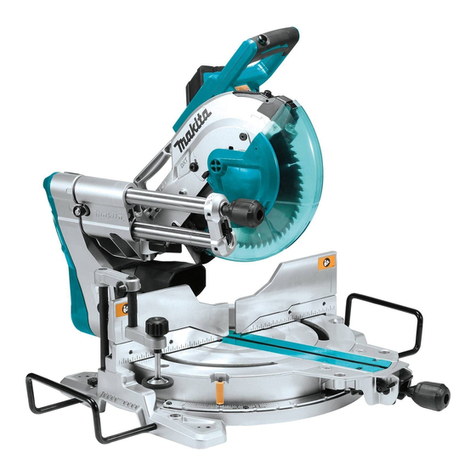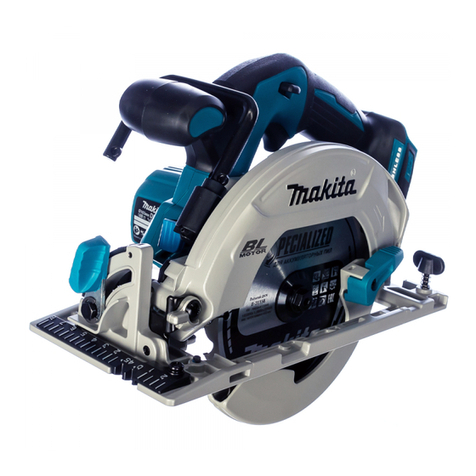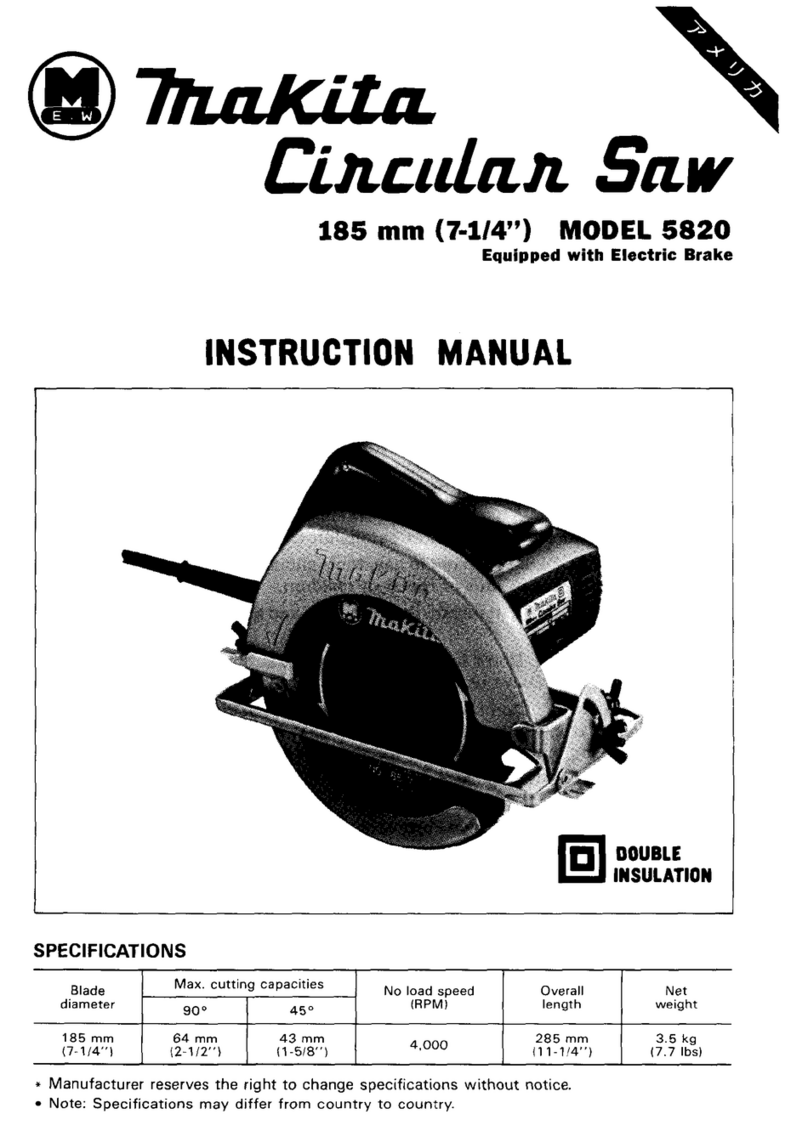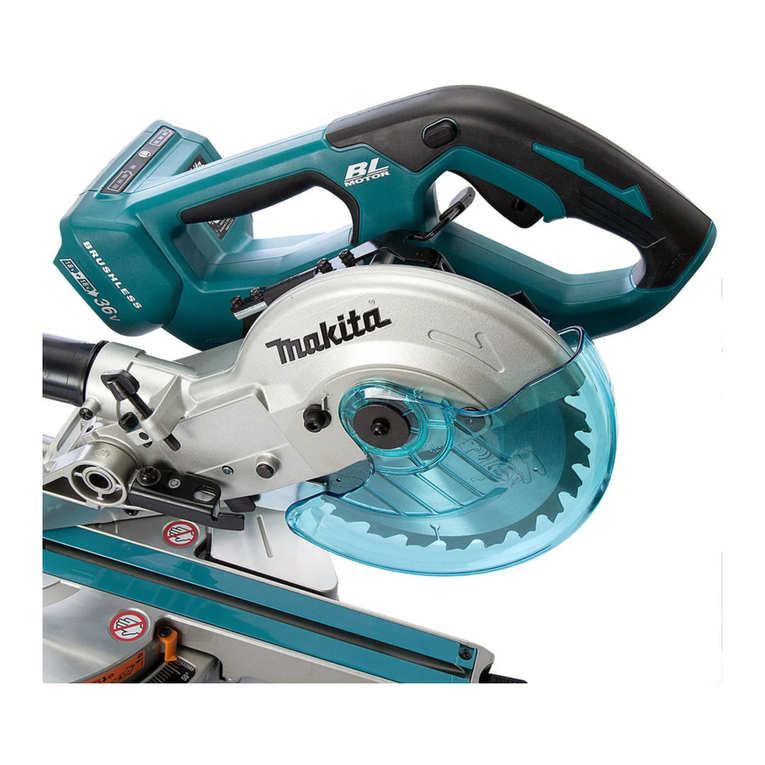US0044-1
Specific Safety
Rules
1.
DANGER! Keep handsaway from cutting area andblade. Keep your second
handonauxiliary handleor motorhousing. If bothhandsare holdingthe saw,
they cannot be cut by the blade.
Keep your body positionedto either side of the saw blade, but not
in
line
withthe
saw
blade. KICKBACKcouldcausethe saw tojump backwards. (See
"Causes and Operator Prevention of Kickback")
Do
not reach underneaththe work. The guard can not protect you from the
blade below the work. Don't attempt to remove cut material when blade is
moving.
CAUTION: Blades coast after turn off.
2.
Check lower guard for proper closing before each use.
Do
not operate saw
if
lower guard does not move freely and close instantly. Never clamp or tie
the lower guardintothe open position. If saw isaccidentally dropped, lower
guard may be bent. Raisethe lowerguardwiththe RetractingHandleandmake
sure
it
movesfreely and does nottouch the bladeor any other part, inall angles
and depths of cut.
3.
Check the operation and condition of the lower guard spring.
If
the guard
andthe spring are notoperating properly, they mustbeserviced before use.
Lower guard may operate sluggishly due todamaged parts, gummy deposits,
or
a
buildup of debris.
4.
Lower guard should be retracted manually only for special cuts such as
"Pocket Cuts" and "Compound Cuts." Raise lower guard
by
Retracting
Handle.As soonas blade enters the material, lower guardmust bereleased.
For
all
other sawing, the lower guard should operate automatically.
5.
Always observe that the lower guard is covering the blade before placing
saw down on bench or floor. An unprotected, coasting blade will cause the
saw towalk backwards, cutting whatever is
in
its path. Be aware of the time
it
takes for the blade to stop after switch is released.
6.
NEVER
holdpiece being cut
in
your handsor acrossyour leg.
It
is important
to support the work properly to minimize body exposure, blade binding, or
loss
of control.
7.
Holdtoolby insulatedgrippingsurfaces when performing
an
operationwhere
the cutting tool may contact hidden wiring or its own cord. Contact with
a
"live" wire will also makeexposed metal parts of the tool "live" and shock
the operator.
8.
When ripping always use a
rip
fence or straight edge guide. This improves
the accuracy of cut and reduces the chance for blade binding.
9.
Always use blades with correct size and shape (diamond vs. round) arbor
holes. Blades that do not matchthe mounting hardware
of
the saw will run
eccentrically, causing
loss
of control.
IO.
Never use damagedor incorrect blade washers or bolts. The blade washers
and bolt were specially designed for your saw, for optimum performance and
safety of operation.
4
